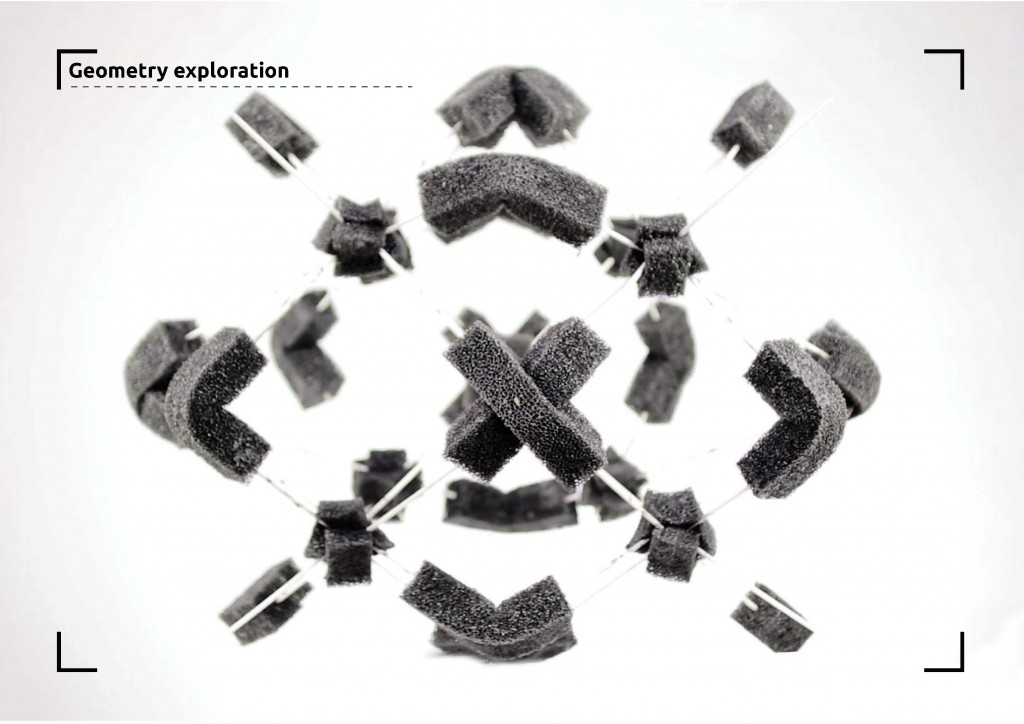|Flux in
Chitosan as the future of water filtration system

|Team
Eduardo Chamorro Martin, Elliot Santos, Marc Bou Assaf
|Faculty
Areti Markopoulou, David Andres Leon, Raimund Krenmueller
|Project year
2017-18
FLUX IN – Lightweight responsive structures is a pioneering research initiative focused on exploring the potential of responsive macro porous structures (MPS) to create self-assembled, lightweight, and rigid systems. The project delves into material research, particularly the investigation of macro porous structures like PU foam, understanding their capillarity to manipulate structural characteristics. The study progresses into examining natural phase-changing materials (PCM), integrating them into the MPS during the liquid state, and incorporating graphene to control thermal and mechanical properties.
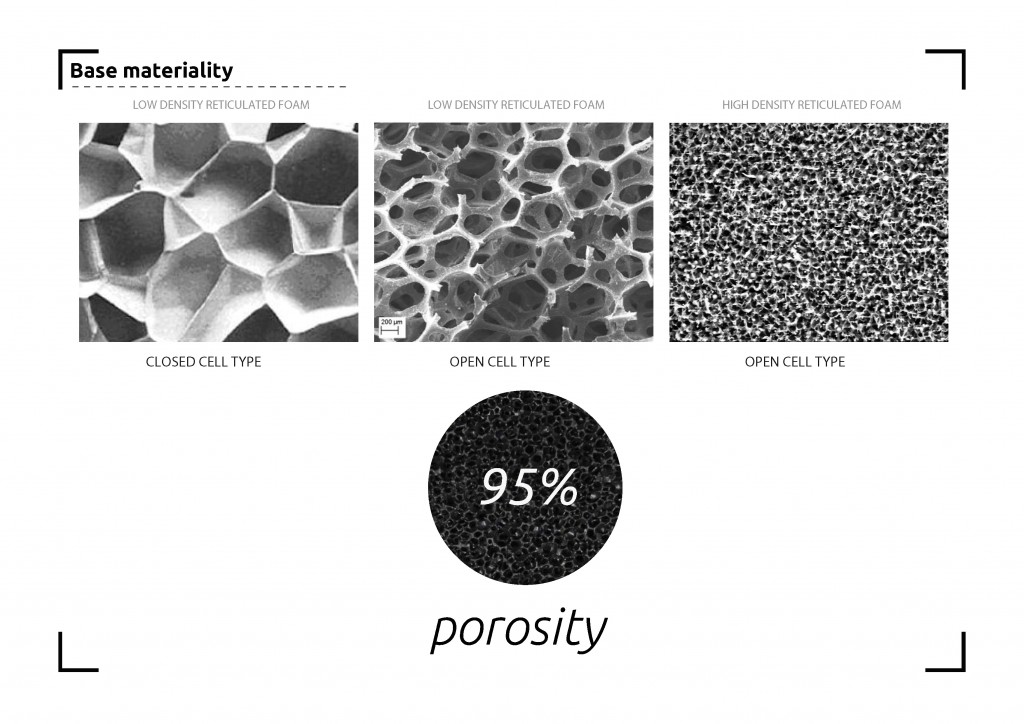
Objective: Investigate the potential application of responsive macro porous structures for self-assembled, lightweight, and rigid systems, challenging traditional fabrication methods, to provide insight into a new era of construction and manufacturing techniques.
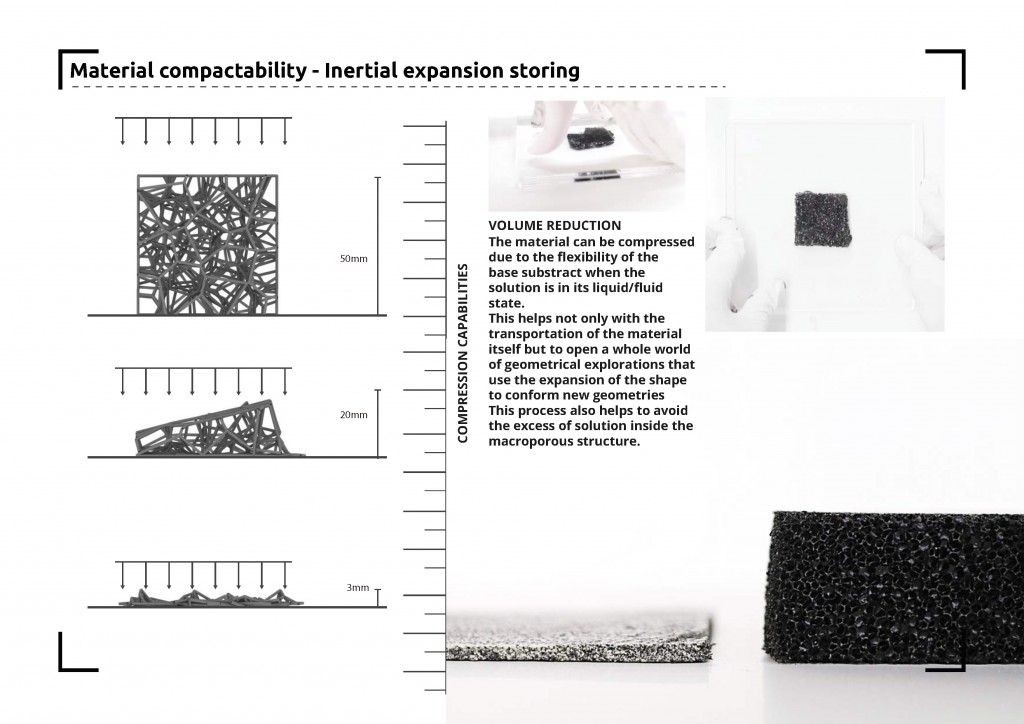
The aim is to develop a versatile material that compresses and expands while maintaining structural integrity, paving the way for innovative architectural systems that challenge conventional fabrication methods. The research spans various applications from envelopes, controlled heating, formal properties, joinery typologies, adhesives, and inflatables, ultimately narrowing down to create a lightweight, rigid system that demonstrates adaptability and resilience.
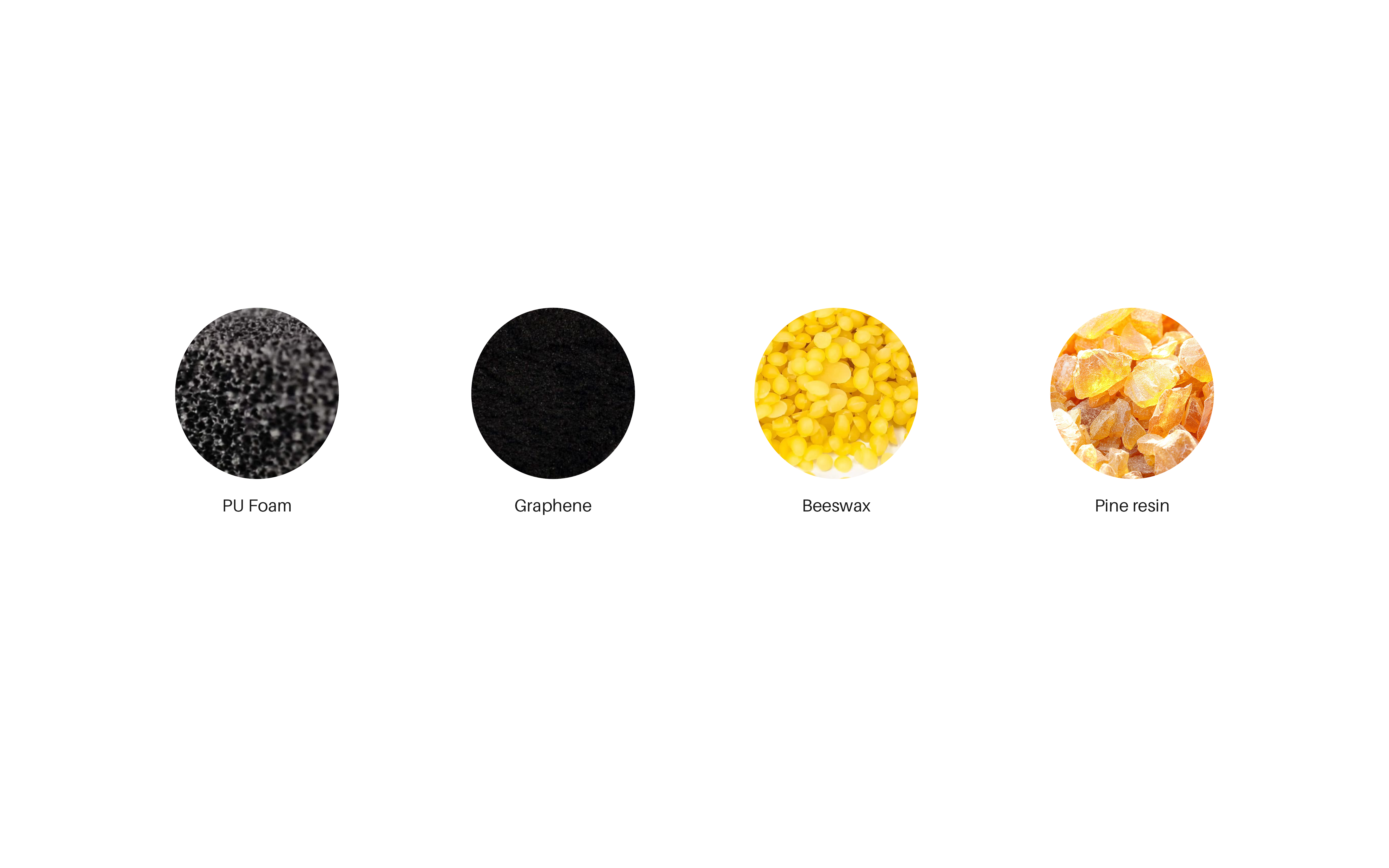
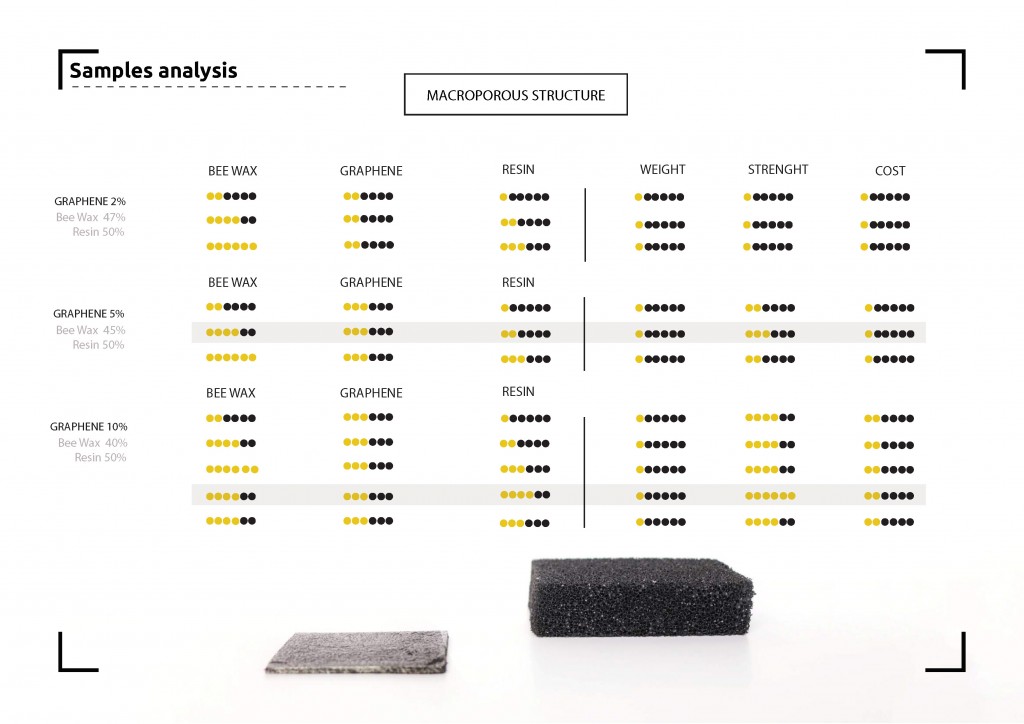
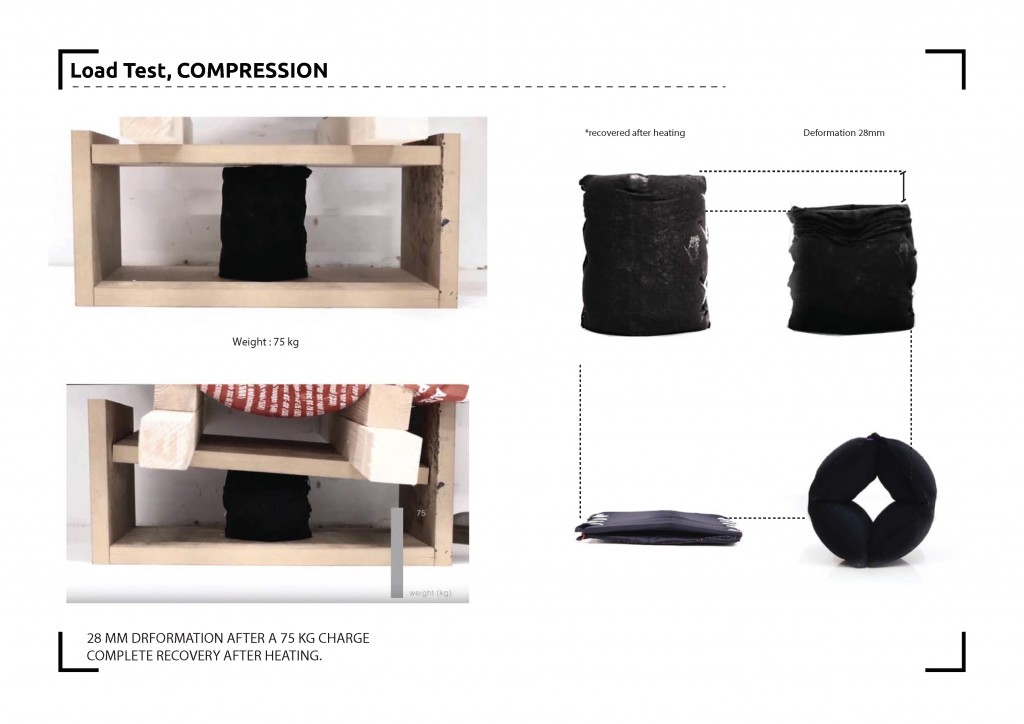
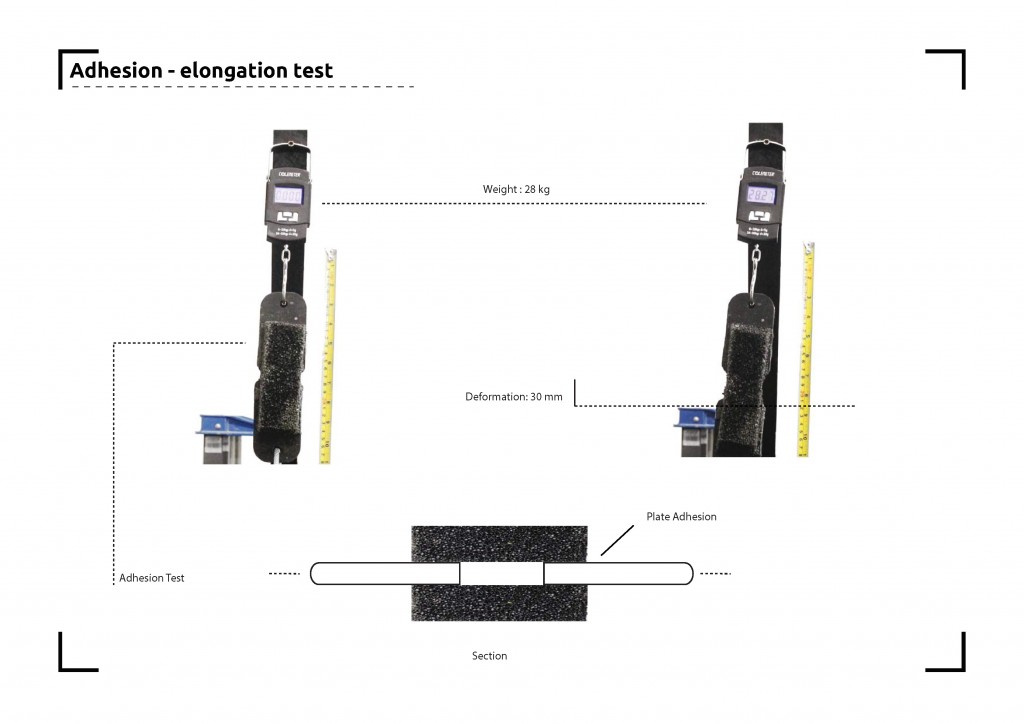
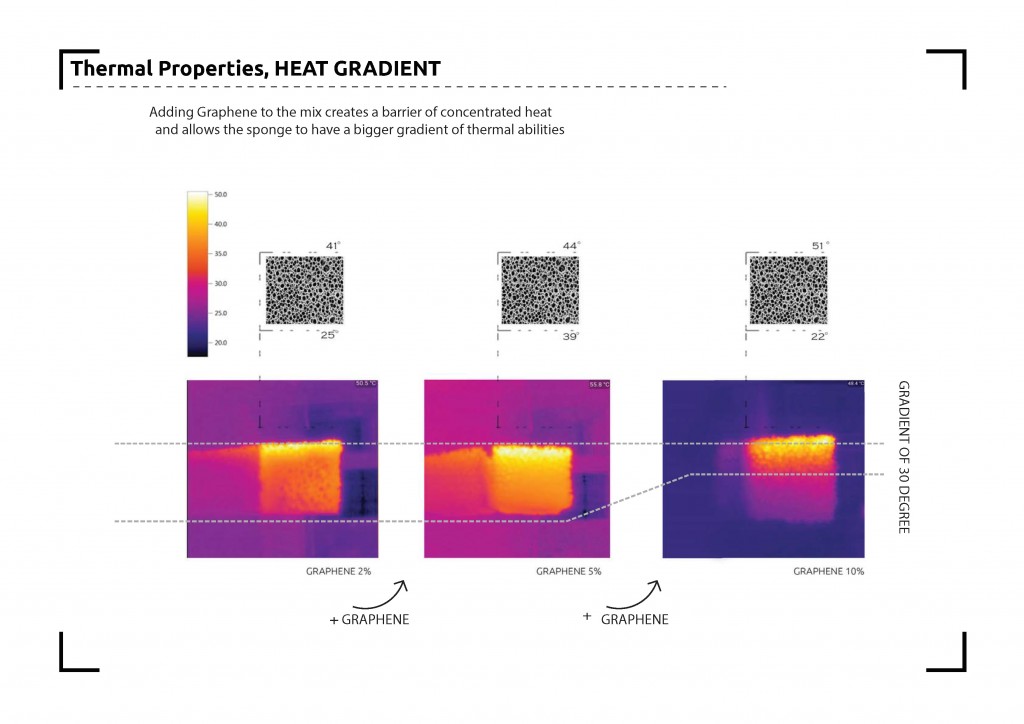
Compression tests on small cubes and encased tubes to determine load-bearing capacity.
Adhesion experiments with MPS adhered to MDF boards, showcasing structural capabilities.
Thermal conductivity trials to observe heat retention and material manipulation periods.
Joinery tests assessing controlled deformation and expansion through halved joints and nodal typologies.
Flux-In represents a meticulously balanced blend of beeswax, Carnauba wax, pine resin, rosin, and graphene. Beeswax, the core component, offers high heat retention, while Carnauba wax enhances hydrophobicity and adhesion. Pine resin reinforces durability without adding excessive weight, and rosin aids in viscosity reduction for structural reinforcement. Graphene, in controlled amounts, boosts thermal conductivity and structural strength within the composite.
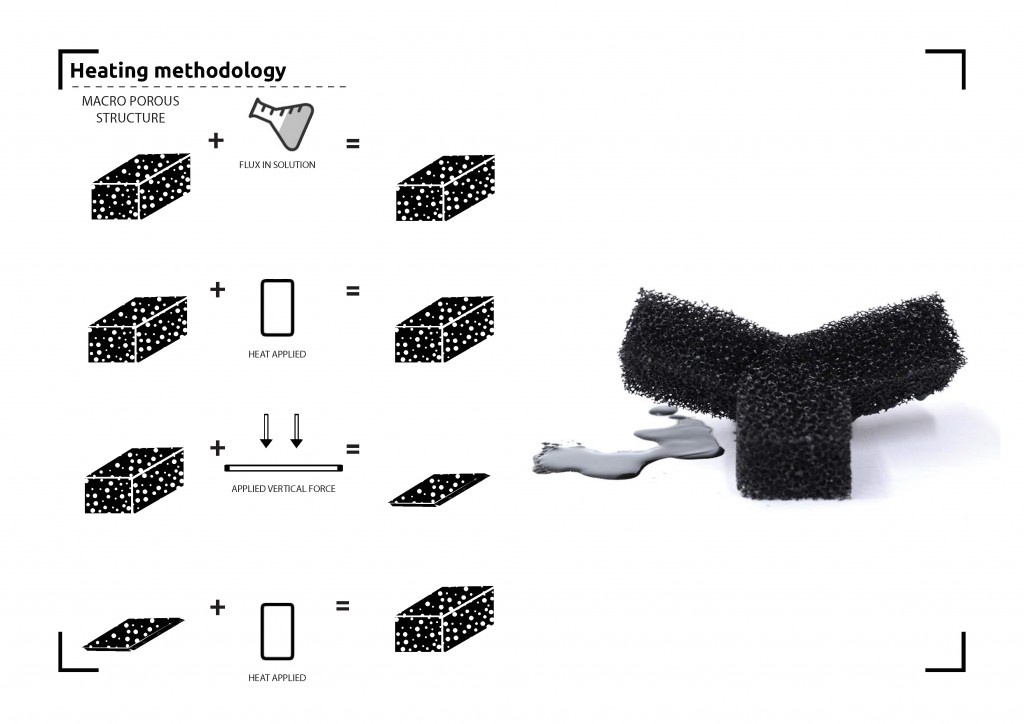
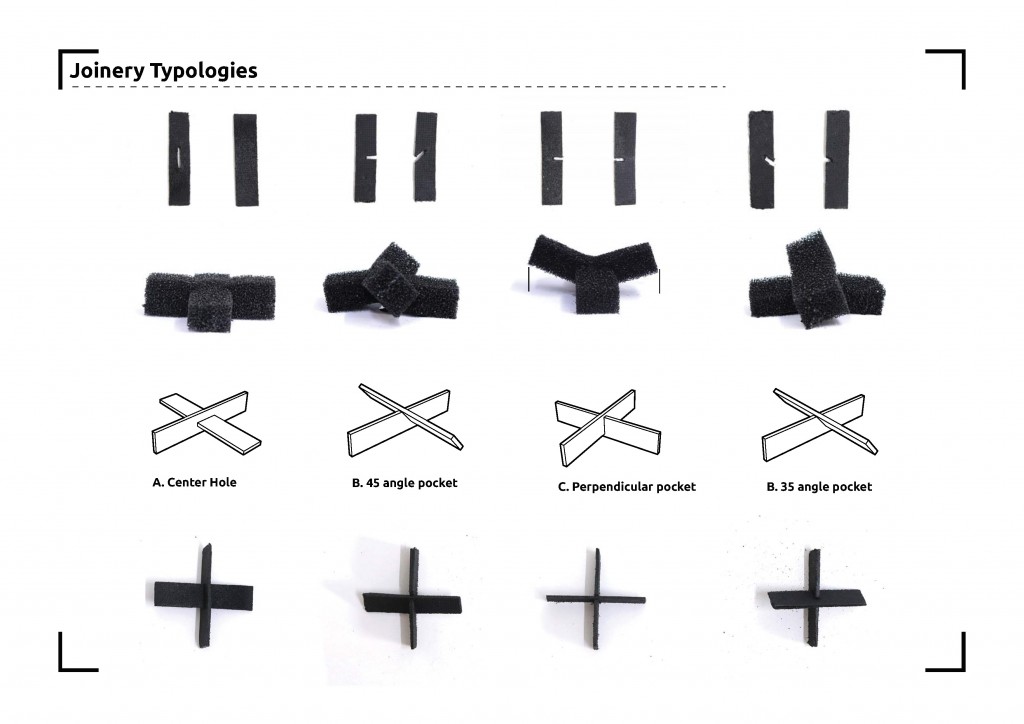
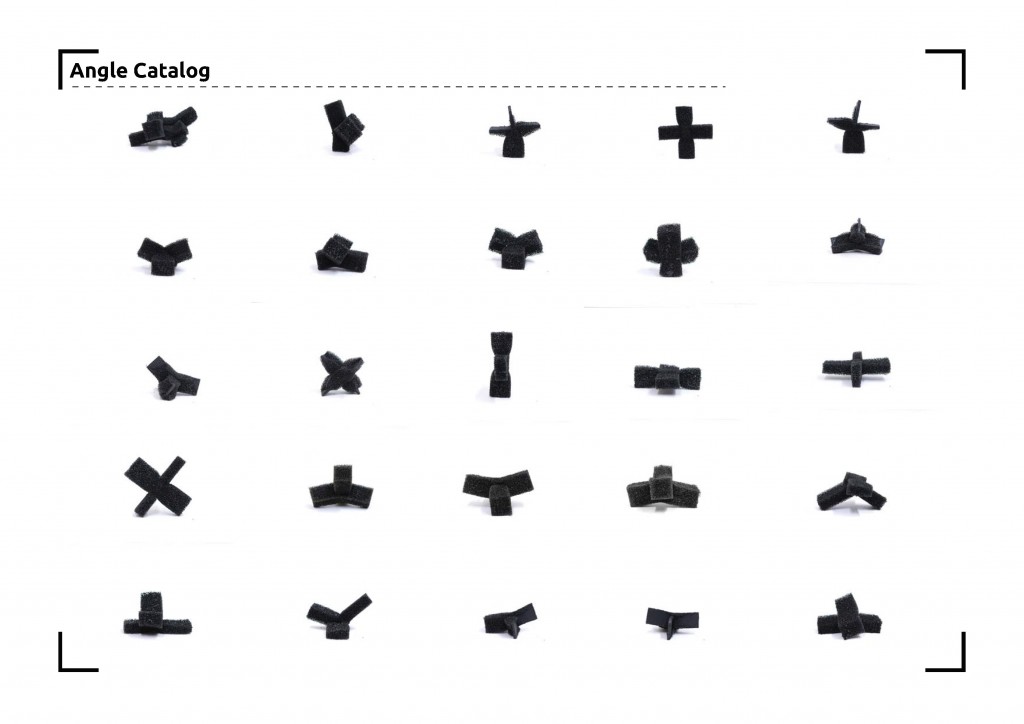
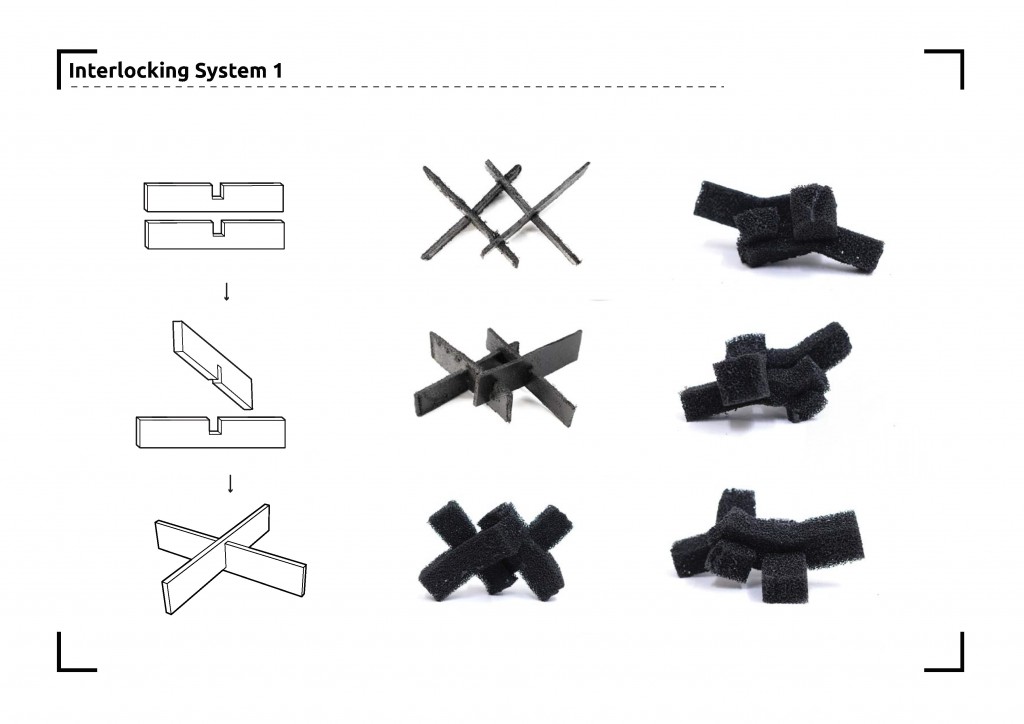
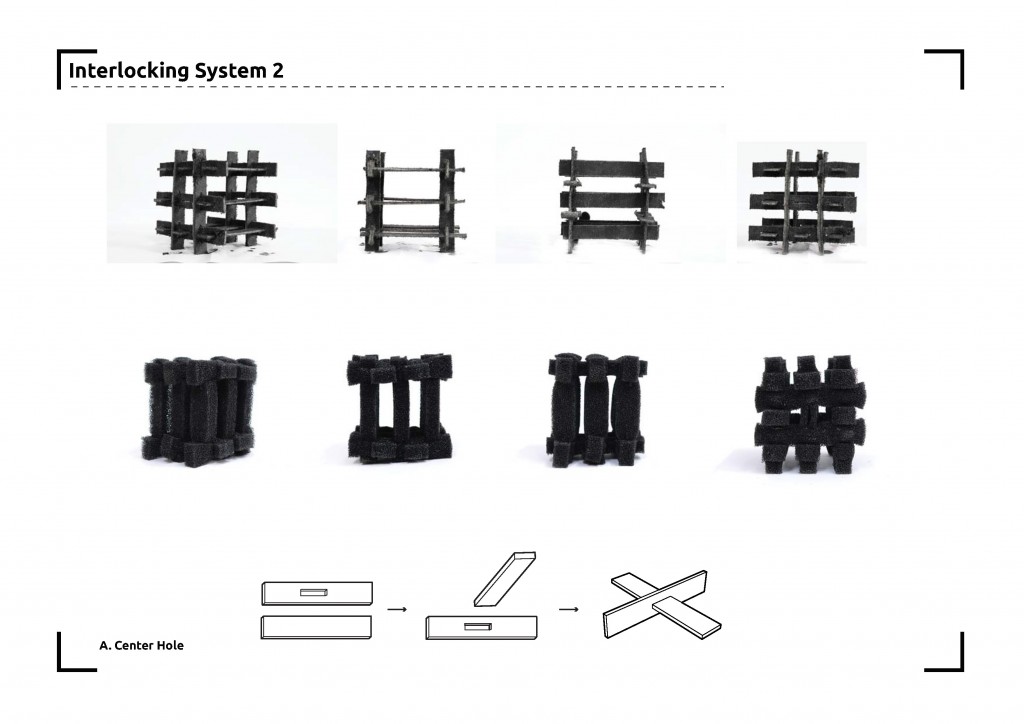
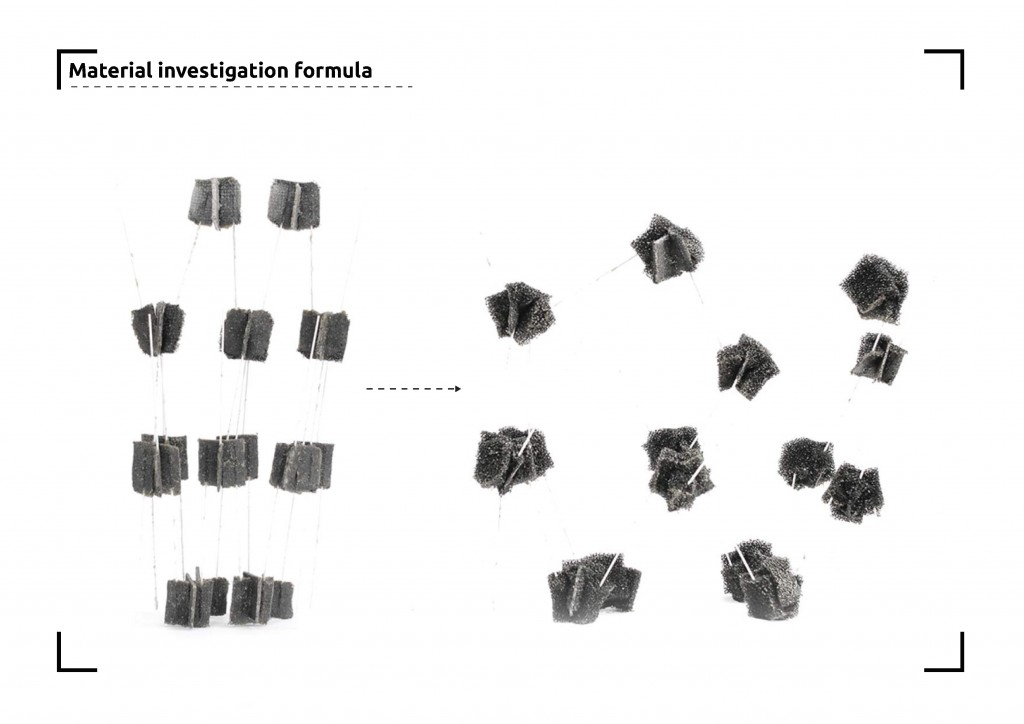
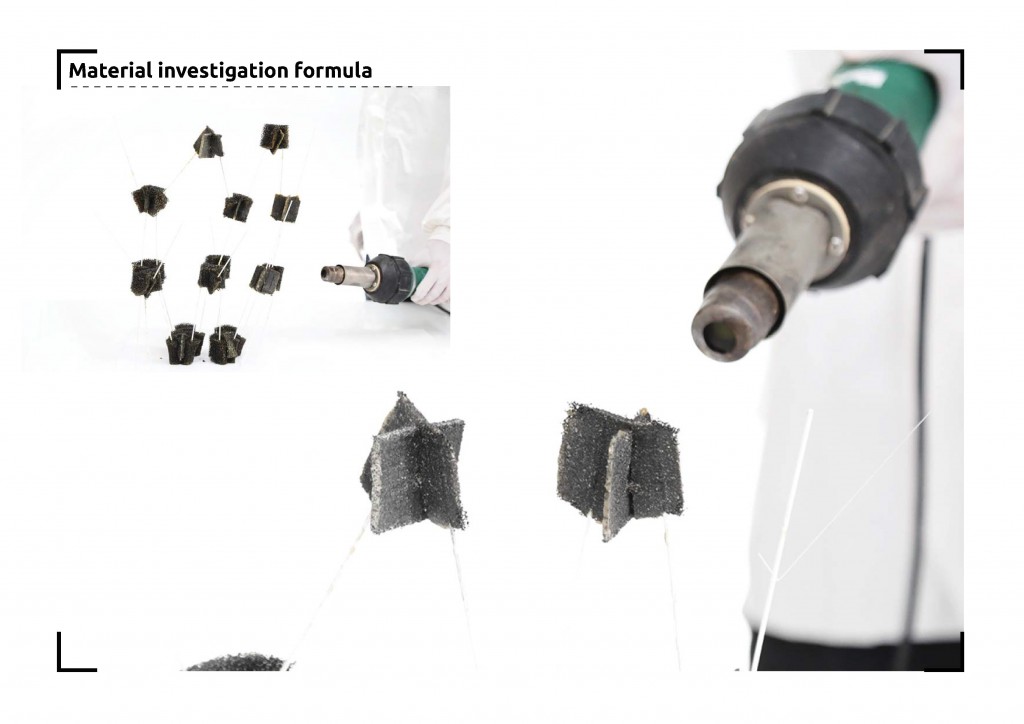
The material’s performance showcases impressive versatility. Compression tests demonstrate its load-bearing capacity, and its self-healing nature upon reheating is noteworthy. Adherence to various substrates proves its remarkable bonding, while graphene’s influence on precise heating and extended manipulation time adds to its adaptability. Flux-In emerges as a promising system, harmonizing phase-changing traits and adaptable structure for revolutionary architectural applications.
The research successfully demonstrated the creation of Flux-In, a phase-changing macro porous structure that exhibits structural adaptability, lightweight properties, and impressive adhesion capabilities. With the material’s healing attributes, minimal impact during construction, ease of flat packing for transportation, and the ability to transform shapes through heat, the study marks a significant stride in the development of transitional lightweight structures with adaptable qualities. Future applications aim to explore Flux-In’s healing capabilities, its impact on other materials during construction, transportation ease through flat packing, and its shape-changing potential through controlled heating
